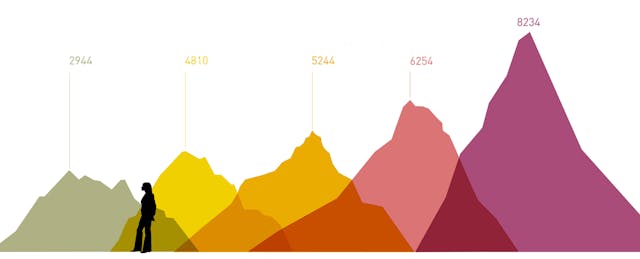Before I became an administrator, I spent 25 years teaching in the classroom. During that time, I sat through many poorly delivered professional development (PD) classes. After each class, I would take a few pages out of the notebook I’d been given, and throw the rest away. I knew if I didn’t figure out what I needed and implement it right away, the notebooks would languish on my bookshelf for years. I also knew I wasn’t alone; most other teachers suffered similar experiences.
After a while, I started teaching my own PD courses. More than anything else, people who participated said, “This was the most useful PD class I have ever taken.” The reason was simple: I made PD practical and immediately applicable. Regardless of what I taught, I always began by providing tools that teachers could immediately and easily use in their class the very next day.
My “teacher-students” also have to rethink how technology might help improve their classrooms and then rebuild a lesson plan using the new methodology. Rather than wait for the teacher to do it at a future date, good PD should insist on letting the instructor serve as the facilitator just as they should do with their own students. The added benefit to this is that teachers are more likely to understand student frustrations and thus be more inclined to adjust their own grading to judge improvement rather than failure as a final endpoint.
It’s vital for PD leaders to use hands-on learning, and to facilitate rather than lecture. Learning through doing both models the evolving role of the classroom teacher and helps the learner better retain the new information. Because all of my current “teacher-students” work in teams to develop resources that will work in the online environment, they learn some of the same key skills as blended learners, in real time. They make presentations to each other and seek feedback to improve their learning, just as they want their students to do.
The Every Student Succeeds Act (ESSA) establishes a new, more rigorous definition of PD that incorporates many of the ideas above. High quality sustained PD as defined in this recent report should “take place over an extended period; longer than one day or a one-time workshop.” It should also incorporate data on both teacher and student needs—that is, it should be data-driven. So, if a district wants to know if the blended method has been successful, it will have a variety of data points available to measure school, teacher and student success and can then adjust the method continually over time to improve student learning.
But to meet the federal guidelines for quality PD, a school district, administrators, and teachers need to begin with a vision for what the classroom should look like. For example, my county in Virginia is moving to have a laptop in every student’s hands within five years. But this comes with a price.
Having digital devices means changing the path, place, pace and time for delivery of classes. This means students may finish a class earlier than June, or have different assignments than their peers based on individual needs and data collected about the pupil. This also means we need to individualize teacher (and presumably administrative) PD because not all teachers need the same professional development. The latter is important as teachers are too often asked to personalize student learning, but are taught with PD that is one-size-fits-all. Rather, administrators must adjust PD to allow for teachers to go at their own pace as well. This means leaders will have to plan long-term and continually tweak PD to meet teachers’ needs, just as teachers have to do with their own students. Strong administrators begin a year or two in advance, by planning their vision, deciding on a timeline for execution, and then finding people internally or outside the school or district to lead the PD.
Educators need to consider change through the prism of what makes the most sense for student mastery. New technology toys are great, but if they can’t be incorporated into the vision of a school, what is the point? Likewise, everyone enjoys a great speaker, but a motivating individual alone is not good PD, nor is a popular educational writer sufficient unless part of a broader context. Professional development should model a school’s vision and demand an actionable item from the learners as an exit ticket. But the vision also has to be reflected in everyone’s actions, from the central office to principals on down.
On a recent school visit I made, the principal was overjoyed that one reluctant educator had put his students in groups rather than the traditional rows. The principal’s attitude was as positive a change for that teacher, as it was for another who had previously begun teaching in this way. Each educator had come to the table with different tools and was allowed to move at their own pace (knowing that movement had to happen). Likewise these teachers could do the same with their own students.
No more “one size fits all” PD notebooks that languish on a shelf, no more speakers unconnected to a vision. No more non-measurement of PD. Following ESSA means better learning for all learners in a school system.


